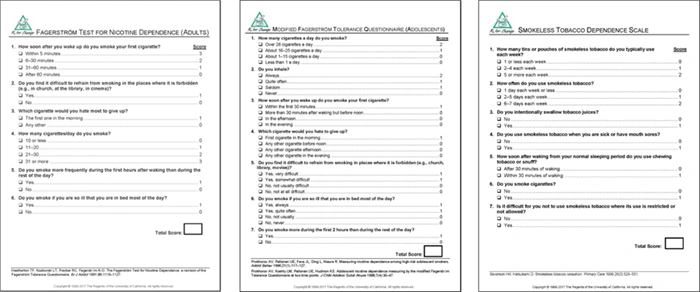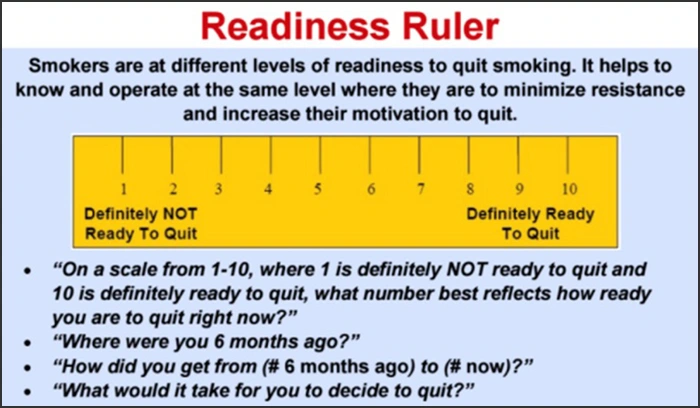Tobacco 101: A Guide to Working with Nicotine Addicted Patients
Course Number: 534
Course Contents
The Role of the Dental Professional
At the outset, the dental team must systematically identify all tobacco using patients. (Ask), clarify what they use and how often, and then (Assess) the level of their addiction and readiness to quit. Over the years the Fagerström test works well in gauging this.
Pre-contemplative stage:
Not usually ready to quit for at least six months
Contemplative stage:
Usually ready to quit in 1 to six months
Preparative stage:
Ready to quit in less than one month.
The method one uses to discuss tobacco use with a patient can be modified based on their addiction level and stage of readiness (Figure 5).53
Figure 6. Readiness Ruler.54
Motivational Interviewing (MI)
Motivational interviewing as a technique was developed in the early 1980s by Bill Miller and Steve Rollnick. It is “a person-centered, collaborative, and goal-oriented style of communication. It is designed to strengthen personal motivation for and commitment to a specific goal by eliciting and exploring the person’s own reasons for change within an atmosphere of acceptance and compassion.”55 This communicative style cannot only be used to help work with tobacco using patients to quit, but can also be incorporated in motivating patients to improve their overall oral health.
Initially, one asks for permission from the patient to discuss their tobacco addiction, and then reflectively listens to what the patient has to say, and then summarizes what has been said. Questions need to be open-ended, non-confrontational, and non- judgmental. Ultimately, the patient must feel that they are self-motivated and have been empowered to change.




